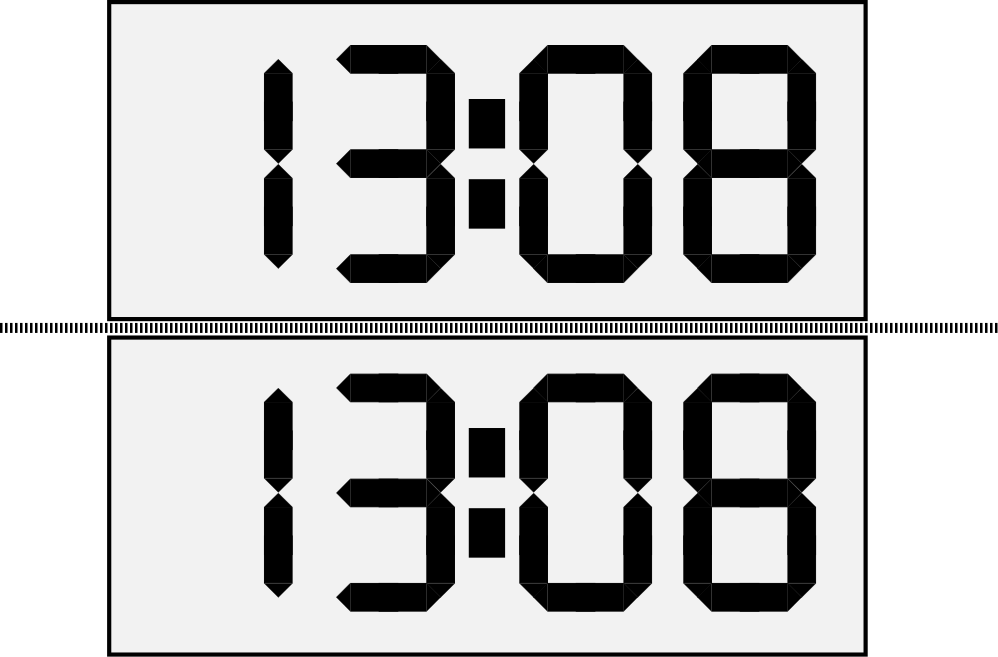Skip over navigation
 Beatrix has a 24-hour digital clock on a glass table-top next to her desk.
Beatrix has a 24-hour digital clock on a glass table-top next to her desk.
When she looked at the clock at 13:08, she noticed that the reflected display also read 13:08, as shown.
How many times in a 24-hour period do the display and its reflection give the same time?
If you liked this problem, here is an NRICH task that challenges you to use similar mathematical ideas.



Or search by topic
Number and algebra
Geometry and measure
Probability and statistics
Working mathematically
Advanced mathematics
For younger learners
Back in Time
Age 14 to 16
ShortChallenge Level 





- Problem
- Solutions
 Beatrix has a 24-hour digital clock on a glass table-top next to her desk.
Beatrix has a 24-hour digital clock on a glass table-top next to her desk.When she looked at the clock at 13:08, she noticed that the reflected display also read 13:08, as shown.
How many times in a 24-hour period do the display and its reflection give the same time?
This problem is taken from the UKMT Mathematical Challenges.
You can find more short problems, arranged by curriculum topic, in our short problems collection.
You may also like
What's Possible?
Many numbers can be expressed as the difference of two perfect squares. What do you notice about the numbers you CANNOT make?
Marbles in a Box
How many winning lines can you make in a three-dimensional version of noughts and crosses?
Attractive Tablecloths
Charlie likes tablecloths that use as many colours as possible, but insists that his tablecloths have some symmetry. Can you work out how many colours he needs for different tablecloth designs?

